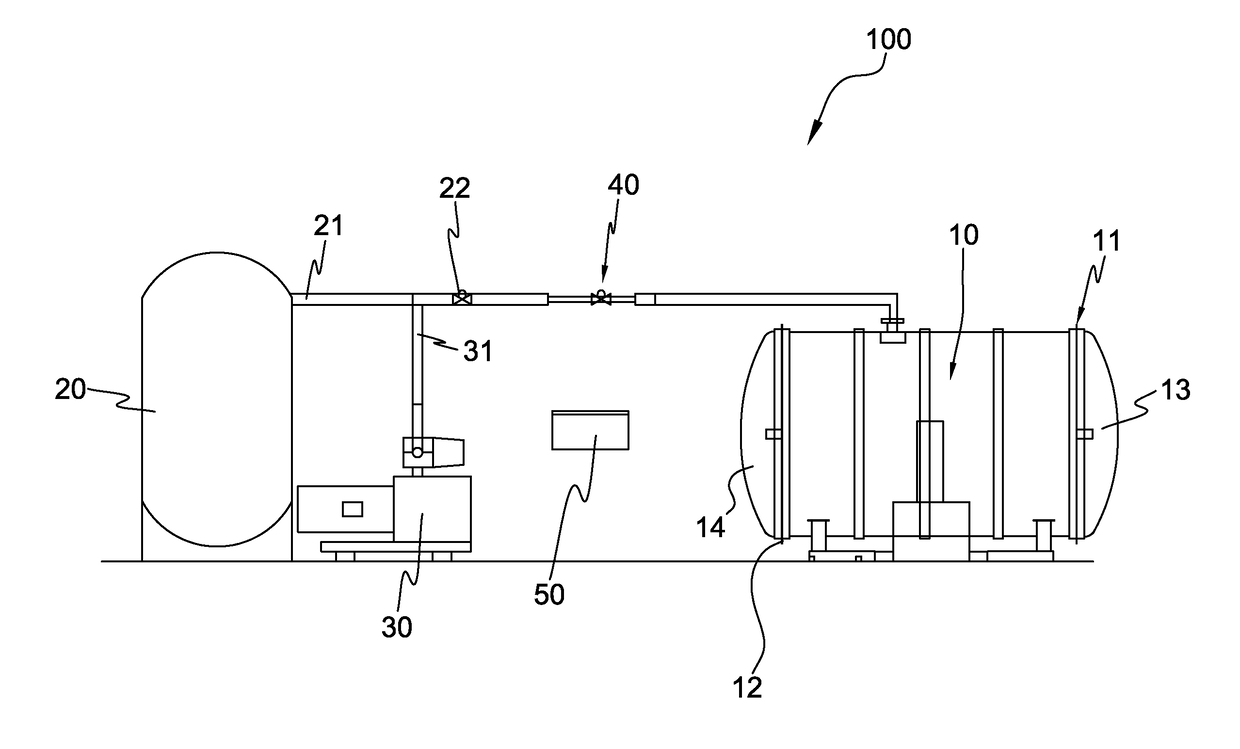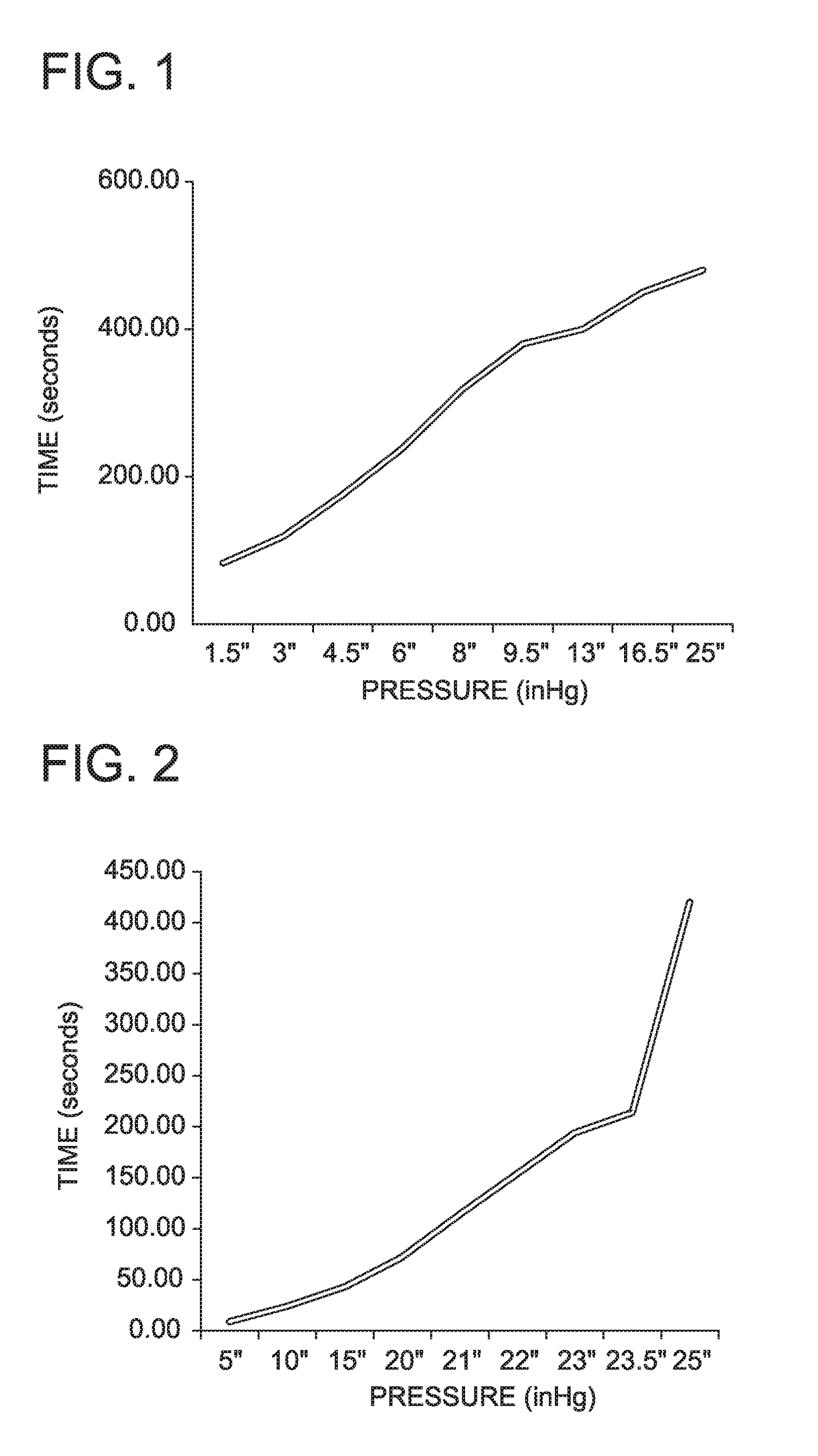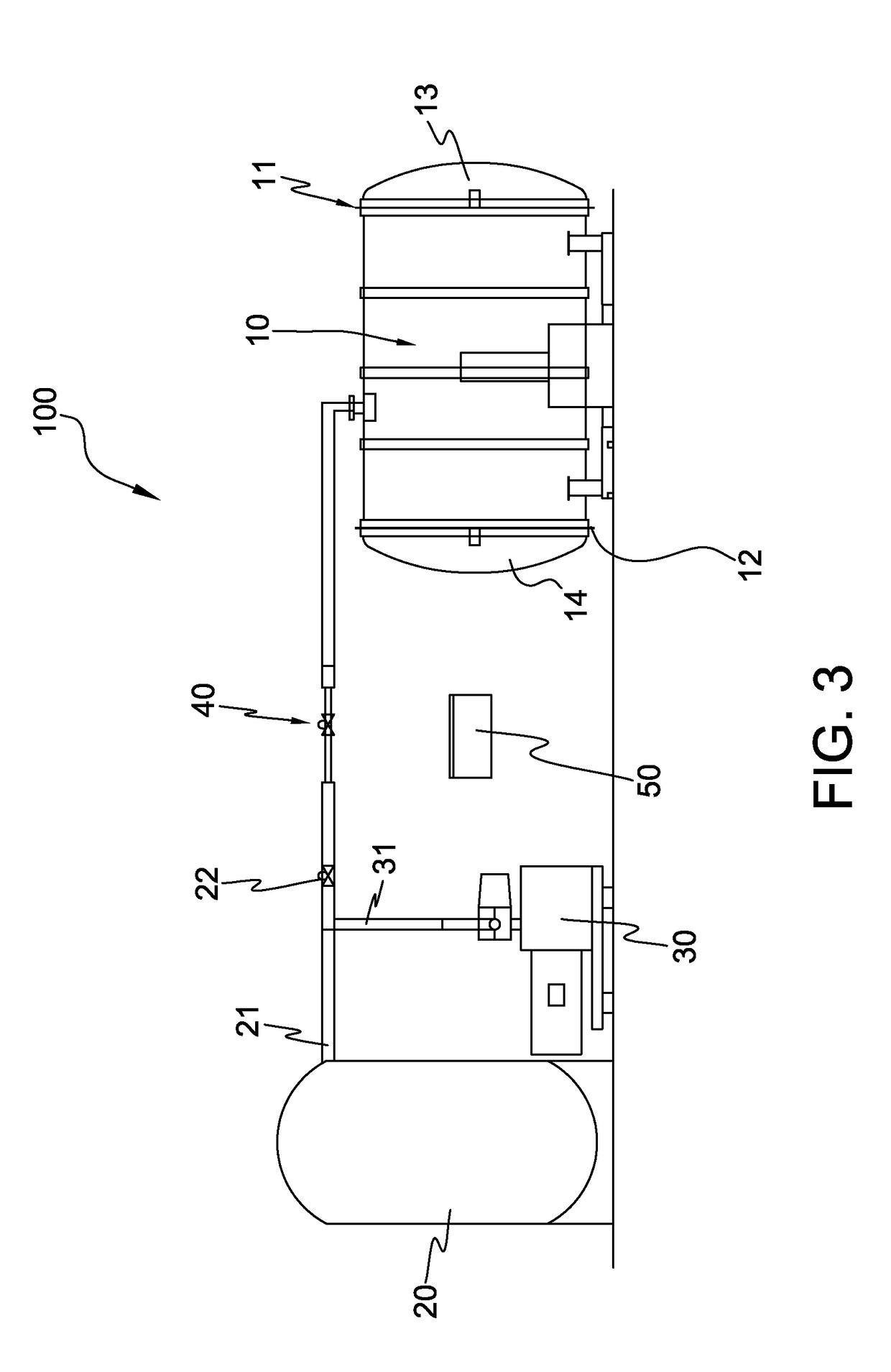Method for humanely stunning and slaughtering animals using low atmospheric pressure and inert gas
a diaphragm respiratory system, gas technology, applied in the direction of gas slaughtering/stunning, slaughtering/slaughtering, poultry/fish slaughtering/stunning, etc., can solve the problems of poor maintenance, bruising of the brain, and stunning the animal, and achieve excellent meat quality
- Summary
- Abstract
- Description
- Claims
- Application Information
AI Technical Summary
Benefits of technology
Problems solved by technology
Method used
Image
Examples
example 1
[0114]The behavior of pigs during slaughter can be used to evaluate the quality of the stun and slaughter process. In this example, the behavior of pigs slaughtered using low atmospheric pressure was evaluated.
[0115]To begin, two pigs were herded into the decompression chamber described in the Test Methods section, and the entrance door closed. The camera in the chamber was activated as decompression was initiated, and the video feed was monitored for the duration of the treatment. The pigs were subjected to low atmospheric pressure treatment, with a target decompression pressure of 25 inHg gauge, a lapse time of 480 seconds, and a hold time of 4 minutes. The pigs' behavior during treatment was observed. The low atmospheric pressure treatment was conducted at a temperature of 84.0° F., a humidity of 88%, and a barometric pressure of 29.44 inHg. The time to various pressures during the treatment are set forth in Table 1, and a plot of the time to various pressures is depicted in FIG....
example 2
[0117]In this example, the process of Example 1 was repeated using the conditions set forth in Table 2 (target decompression pressure 25 inHg, lapse time 420 seconds, hold time 4 minutes). A plot of the time to the various pressures is depicted in FIG. 2. The low atmospheric pressure treatment in this example was conducted at a temperature of 86.9° F., a humidity of 78%, and a barometric pressure of 29.41. Two pigs were evaluated.
TABLE 2Time toPressurepressure(inHg gauge)(seconds)5910241543207221114221542319423.521425420
[0118]In this treatment, movement before loss of posture was observed, but appeared to be jostling for position. Loss of posture occurred at 100 seconds. No movement was observed after 198 seconds. No pigs survived the treatment.
example 3
[0119]In this example, the slaughter of a chicken using the combination of low atmospheric pressure and a two phase addition of carbon dioxide gas was demonstrated. Unless otherwise indicated, the pressures given in Example 3 are absolute pressure.
[0120]A chicken of average weight (1.8 kg) was placed in the decompression chamber, and the pressure was lowered to about 300 mbar (about 8.85 inHg) (absolute pressure) in about 46 seconds. This absolute pressure (300 mbar) corresponds to a volume of air of 300 liters uniformly distributed inside the chamber and in which there is thus a quantity of nitrogen (N2) equal to about 78% (corresponding to 234 liters), and an amount of oxygen (O2) equal to about 21% (corresponding to 63 liters). Therefore, the concentration of evenly distributed oxygen in the chamber (at depression of 300 mbar) was equal to 6.3% of the volume of the chamber (1000 liters).
[0121]Carbon dioxide gas was then introduced into the chamber in an amount of 40% of the volum...
PUM
 Login to View More
Login to View More Abstract
Description
Claims
Application Information
 Login to View More
Login to View More - R&D
- Intellectual Property
- Life Sciences
- Materials
- Tech Scout
- Unparalleled Data Quality
- Higher Quality Content
- 60% Fewer Hallucinations
Browse by: Latest US Patents, China's latest patents, Technical Efficacy Thesaurus, Application Domain, Technology Topic, Popular Technical Reports.
© 2025 PatSnap. All rights reserved.Legal|Privacy policy|Modern Slavery Act Transparency Statement|Sitemap|About US| Contact US: help@patsnap.com



